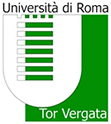Profile
 |
Caccuri Anna Maria coccuri@uniroma2.it Office/Location Lorem ipsum dolor sit amet Tel: +39 06 72596204 Fax: +39 00 00000000 |
Biography
Biography
AMC graduated in Biological Science (cum laude) at the University of Rome La Sapienza.
She worked as a Post-doc fellow in the
- Department of Human Biological Chemistry and Genetics of the University of Texas, in the Medical Branch of Galveston (U.S.A.)
- Department of Biochemistry of the University of Oxford (U.K).
From 1983 to 2001 she was Assistant Professor of Biochemistry at the University of Chieti G. D’Annunzio and at the University of Rome Tor Vergata.
Since 2001 she is Associate Professor of Biochemistry at University of Rome Tor Vergata.
Research
Research Activity
AMC scientific activity is based on the study of structural, catalytic and physiological properties of glutathione S-transferases (GSTs). Since 2002 she has been involved in the design, synthesis and study of potent inhibitors of these enzymes. The new compounds, characterized by a peculiar mechanism of action and promising anticancer properties, have been included in the United States Patent No. US8,796,317 B2 (USE OF 7-NITRO-2,1,3-BENZOXADIAZOLE DERIVATIVES FOR ANTICANCER THERAPY, Caccuri et al.) and in the Italian Patent No 0001412189 (DERIVATI DEL 7-NITRO-2,1,3-BENZOSSADIAZOLO PER TERAPIA ANTITUMORALE, Mai, Caccuri et al). In particular, among the new derivatives, the compound MC3181 is highly effective against human melanoma cell lines harboring the BRAFV600E mutation and against mutated melanoma cells made resistant to the BRAF inhibitor vemurafenib.
Author of 2 patents, and 90 publications on international refereed journals.
Her papers have been cited over 2500 times and her h-index is 31 (ISI & Scopus).
Funding received:
2005: research contract: “study of the interaction between the enzyme glutathione S-transferase detoxifying skin and the substances listed in the CE / 39/2000 with the notation ‘skin ‘aimed at biological monitoring of exposed subjects” funded by ISPESL ( Role: PI).
2007-2010 project: “Alliance Against Cancer” funded by the ISS (Role: PI of research unit).
2008 research contract ” Identification of Molecular Markers for the development of new diagnostic and therapeutic strategies in the treatment of Mesothelioma” funded by ISPESL ( Role: PI).
2010-2013 project: “Exploiting the protein-protein interaction properties of glutathione transferase GSTP1-1 for cancer treatment” funded by AIRC (Role: PI).
2016-2017 project: “Role of the glutathione transferase inhibitor MC3181 in the modulation of the growth and metastatic spreading of cutaneous melanoma” funded by University of Rome “Tor Vergata” Grant: “CONSOLIDATE THE FOUNDATIONS” (Role: PI).
2016-2018 project: “Study of the potential protective role of the enzyme glutathione transferase against retinal neurodegeneration. Analysis of the effect of glycemic variability on retinal glia cells” funded by Italian Ministry of Health (5×1000) and Fondazione Roma (Role PI).
Publications
Selected Publications
- The nitrobenzoxadiazole derivative MC3181 blocks melanoma invasion and metastasis. De Luca A. et al. Oncotarget. 2017;8(9):15520-15538.
- New insight into the interaction of TRAF2 C-terminal domain with lipid raft microdomains. Ceccarelli A. et al. Biochim Biophys Acta. 2017;1862(9):813-822.
- A new water soluble MAPK activator exerts antitumor activity in melanoma cells resistant to the BRAF inhibitor vemurafenib. Graziani G. et al Biochem Pharmacol. 2015;95(1):16-27.
- A Novel Orally Active Water-soluble Inhibitor of Human Glutathione Transferase Exerts a Potent and Selective Antitumor Activity against Human Melanoma Xenografts. De Luca A. et al . Oncotarget. 2015;6(6):4126-43.
- Synthesis and structure-activity relationship of new cytotoxic agents targeting human glutathione-S-transferases. Rotili D. et al. Eur J Med Chem. 2015;89:156-71.
- The fine-tuning of TRAF2-GSTP1-1 interaction: effect of ligand binding and in situ detection of the complex. De Luca A. et al. Cell Death Dis. 2014;5:e1015.
- New insights into the mechanism of JNK1 inhibition by glutathione transferase P1-1. De Luca A. et al. Biochemistry. 2012;51(37):7304-12.
- The glutathione transferase inhibitor 6-(7-nitro-2,1,3-benzoxadiazol-4-ylthio)hexanol (NBDHEX) increases temozolomide efficacy against malignant melanoma. Tentori L. et al. Eur J Cancer. 2011;47(8):1219-30.
- Structural basis for the binding of the anticancer compound 6-(7-nitro-2,1,3-benzoxadiazol-4-ylthio)hexanol to human glutathione s-transferases. Federici L. et al. Cancer Res. 2009;69(20):8025-34.
- Overcoming resistance to conventional drugs in Ewing sarcoma and identification of molecular predictors of outcome.Scotlandi K. et al. J Clin Oncol. 2009;27(13):2209-16.
- 6-(7-Nitro-2,1,3-benzoxadiazol-4-ylthio)hexanol, a specific glutathione S-transferase inhibitor, overcomes the multidrug resistance (MDR)-associated protein 1-mediated MDR in small cell lung cancer. Filomeni G. et al. Mol Cancer Ther. 2008;7(2):371-9.
- Overcoming glutathione S-transferase P1-related cisplatin resistance in osteosarcoma. Pasello M. et al. Cancer Res. 2008;68(16):6661-8.
- A strong glutathione S-transferase inhibitor overcomes the P-glycoprotein-mediated resistance in tumor cells. Turella P. et al. J Biol Chem. 2006;281(33):23725-32.
- 7-Nitro-2,1,3-benzoxadiazole derivatives, a new class of suicide inhibitors for glutathione S-transferases. Mechanism of action of potential anticancer drugs. Ricci G. et al. J Biol Chem. 2005;280(28):26397-405.
- Proapoptotic activity of new glutathione S-transferase inhibitors. Turella P. et al. Cancer Res. 2005;65(9):3751-61.
Teaching
Teaching – link to Didattica Web
Enzimology . Master Degree in Chemistry-School: Mathematics, Physics and Natural Sciences (48 hours/average 10 students/year).
Biotechnology and Applied Biochemistry -Bachelor’s Degree in Chemistry – School: Mathematics, Physics and Natural Sciences (48 hours/average 15 students/year).
Enzimology – Master Degree in Medical Biotechnology – School: Medicine and Surgery (16 hours/average 50 students/year).


